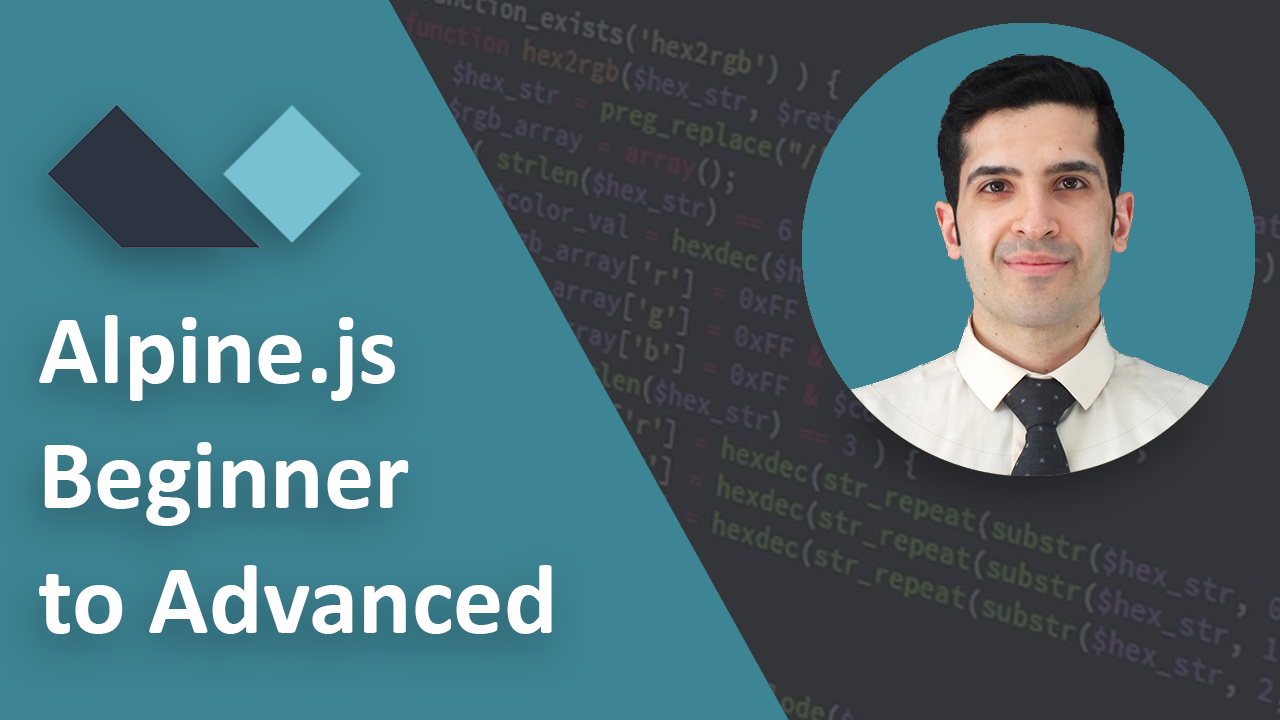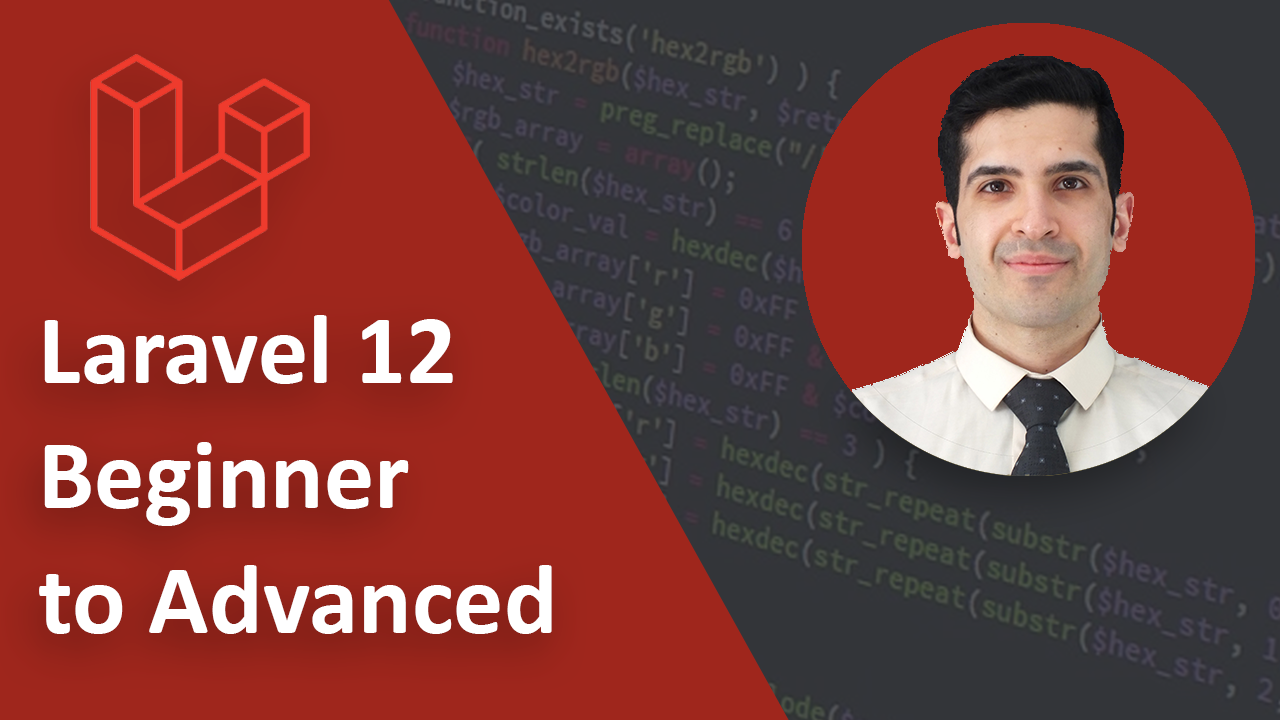Alpine.js Beginner to Advanced 2025: Everything You Need to Know
Last Updated on Jul 18, 2025
- Introduction
- What is Alpine.js?
- Why Choose Alpine.js Over Other Frameworks?
- 1. Simplicity
- 2. Performance
- 3. Zero Build Step (Optional)
- 4. Ideal for UI Enhancements
- 5. Easy Learning Curve
- Setting Up Alpine.js in 2025
- Core Concepts and Directives in Alpine.js
- 1. x-data: Defining Reactive State
- 2. x-bind: Dynamic Attribute Binding
- 3. x-on: Event Handling
- 4. x-show vs. x-if: Conditional Rendering
- 5. x-model: Two-Way Data Binding
- 6. x-transition: Adding Transitions
- 7. x-ref: DOM References
- Building Real-World Components
- Practical Project Walkthrough: Building a Simple Shopping Cart Widget
- Project Overview:
- Step 1: HTML Structure and State
- Step 2: JavaScript Logic
- Step 3: Key Alpine Concepts Used
- Best Practices: Things to Do and Not to Do
- When Not to Use Alpine.js
- Advanced Techniques
- Debugging & Troubleshooting Tips
- Community and Resources
- Conclusion
- Key Takeaways
Introduction
JavaScript frameworks have become essential in modern web development. However, not every project needs complex tools like React, Vue, or Angular. Sometimes, all you need is a lightweight solution to add interactivity directly within HTML. That’s where Alpine.js shines.
Alpine.js is a lightweight, declarative JavaScript framework ideal for enhancing server-rendered pages and static sites. Whether you're adding a simple toggle button or building dynamic interfaces, Alpine.js provides a concise and intuitive way to work with JavaScript in the browser.
In this comprehensive guide, we’ll walk you through Alpine.js from beginner basics to advanced techniques as of 2025. This guide is aimed at developers looking for a simple, modern, and effective way to add interactive behavior to web pages without overcomplicating their stack.
What is Alpine.js?
Alpine.js is a minimal JavaScript framework that enables reactive and declarative UI components using a syntax similar to Vue.js, but without the overhead.
Key Characteristics
- Small size: ~10 KB gzipped
- No build step required: Simply add a script tag
- Reactive state management
- Declarative syntax inspired by Vue.js
- Seamless integration with Tailwind CSS
- Progressive enhancement: Works alongside server-rendered content
Note: Alpine.js is not intended for building large-scale single-page applications (SPAs). It's ideal for interactive UI components on multi-page applications (MPAs) or static sites.
Why Choose Alpine.js Over Other Frameworks?
1. Simplicity
- No virtual DOM
- No JSX or templates beyond HTML
- No complex state management libraries
2. Performance
- Lightweight footprint
- Fast load times and minimal runtime overhead
3. Zero Build Step (Optional)
- Add via CDN for quick use
- Optionally integrate with build tools for larger projects
4. Ideal for UI Enhancements
Perfect for elements such as:
- Dropdown menus
- Modals
- Accordions
- Forms and inputs
- Toggle switches
5. Easy Learning Curve
If you’re familiar with HTML and JavaScript, Alpine.js is easy to pick up—especially if you've used Vue.js.
Setting Up Alpine.js in 2025
1. Quick Start Using CDN
For prototypes or lightweight projects:
<script src="https://cdn.jsdelivr.net/npm/alpinejs@3.x.x/dist/cdn.min.js" defer></script>
- Why use
defer? It ensures Alpine initializes only after the HTML is fully parsed, preventing errors related to DOM elements not being available yet.
2. Using npm/Yarn
For projects using Vite, Webpack, Laravel Mix, etc.:
npm install alpinejs
# or
yarn add alpinejs
Then in your JavaScript entry file:
import Alpine from 'alpinejs';
window.Alpine = Alpine;
Alpine.start();
3. Integration with Build Tools + Tailwind CSS
Steps:
- Install via npm/yarn.
- Import it in your JavaScript bundle.
- Combine with Tailwind CSS in your build process.
Core Concepts and Directives in Alpine.js
Alpine.js works through a collection of special attributes and directives attached directly to HTML elements.
1. x-data: Defining Reactive State
Defines local state scoped to an element.
Example:
<div x-data="{ count: 0 }">
<button @click="count++">Increment</button>
<span x-text="count"></span>
</div>
Important Notes:
- State is localized to each
x-datablock. - Data is reactive—changes automatically update the DOM.
2. x-bind: Dynamic Attribute Binding
Use it to bind dynamic values to HTML attributes.
Example:
<div x-data="{ isActive: true }">
<button :class="isActive ? 'bg-blue-500' : 'bg-gray-500'">Click Me</button>
</div>
:classis shorthand forx-bind:class.
3. x-on: Event Handling
Attach event listeners.
Example:
<div x-data="{ message: '' }">
<input type="text" @input="message = $event.target.value">
<p x-text="message"></p>
</div>
- Shorthand:
@event=x-on:event.
4. x-show vs. x-if: Conditional Rendering
x-show
- Toggles visibility using CSS (
display: none). - Elements always remain in the DOM.
x-if
- Fully removes or adds elements to the DOM.
Comparison:
-
x-show:- DOM Presence: The element always exists in the DOM.
- Use Case: Ideal for toggling visibility (e.g., modals, dropdowns) without removing elements entirely.
-
x-if:- DOM Presence: The element is conditionally added or removed from the DOM.
- Use Case: Best for reducing DOM clutter or when elements shouldn’t exist unless needed (e.g., dynamic form sections).
5. x-model: Two-Way Data Binding
Simplifies syncing form inputs with state.
Example:
<div x-data="{ name: '' }">
<input x-model="name" type="text" placeholder="Your name">
<p x-text="name"></p>
</div>
6. x-transition: Adding Transitions
Adds enter/leave animations automatically.
Example:
<div x-data="{ open: false }">
<button @click="open = !open">Toggle</button>
<div x-show="open" x-transition>Fades in and out!</div>
</div>
- Supports CSS classes for fine-tuning animations.
7. x-ref: DOM References
Direct access to DOM nodes via $refs.
Example:
<div x-data="{ focusInput() { $refs.input.focus() } }">
<input x-ref="input" type="text">
<button @click="focusInput()">Focus Input</button>
</div>
Building Real-World Components
1. Dropdown Menu
<div x-data="{ open: false }" class="relative">
<button @click="open = !open">Menu</button>
<div x-show="open" class="absolute bg-white shadow-md">
<a href="#" class="block px-4 py-2">Link 1</a>
<a href="#" class="block px-4 py-2">Link 2</a>
</div>
</div>
2. Modal Window
Includes backdrop handling:
<div x-data="{ open: false }">
<button @click="open = true">Open Modal</button>
<div x-show="open" class="fixed inset-0 flex items-center justify-center bg-black/50" x-transition>
<div @click.outside="open = false" class="bg-white p-6 rounded">
<p>Modal Content</p>
<button @click="open = false">Close</button>
</div>
</div>
</div>
@click.outside: Closes the modal if you click outside of it (added in newer Alpine versions).
3. Tab System
<div x-data="{ tab: 'first' }">
<nav>
<button @click="tab = 'first'">First</button>
<button @click="tab = 'second'">Second</button>
</nav>
<div x-show="tab === 'first'">First tab content</div>
<div x-show="tab === 'second'">Second tab content</div>
</div>
Practical Project Walkthrough: Building a Simple Shopping Cart Widget
To bring together everything you've learned so far, let’s walk through building a simple shopping cart widget. This example combines multiple Alpine.js features like state management, event handling, and conditional rendering.
Project Overview:
We’ll create:
- A product list with “Add to Cart” buttons.
- A cart section showing added items and total price.
- Quantity controls for each cart item.
Step 1: HTML Structure and State
<div x-data="shoppingCart()">
<!-- Product List -->
<div>
<template x-for="product in products" :key="product.id">
<div class="border p-4 mb-2">
<p x-text="product.name"></p>
<p>$<span x-text="product.price"></span></p>
<button @click="addToCart(product)">Add to Cart</button>
</div>
</template>
</div>
<!-- Cart -->
<div class="mt-6 border-t pt-4">
<h2>Your Cart</h2>
<template x-for="item in cart" :key="item.id">
<div class="flex justify-between items-center mb-2">
<div>
<p x-text="item.name"></p>
<p>Quantity: <span x-text="item.quantity"></span></p>
</div>
<div>
<button @click="increase(item)">+</button>
<button @click="decrease(item)">-</button>
</div>
</div>
</template>
<p>Total: $<span x-text="total"></span></p>
</div>
</div>
Step 2: JavaScript Logic
<script>
function shoppingCart() {
return {
products: [
{ id: 1, name: 'Product A', price: 10 },
{ id: 2, name: 'Product B', price: 20 }
],
cart: [],
get total() {
return this.cart.reduce((sum, item) => sum + (item.price * item.quantity), 0);
},
addToCart(product) {
const existing = this.cart.find(item => item.id === product.id);
if (existing) {
existing.quantity++;
} else {
this.cart.push({ ...product, quantity: 1 });
}
},
increase(item) {
item.quantity++;
},
decrease(item) {
if (item.quantity > 1) {
item.quantity--;
} else {
this.cart = this.cart.filter(i => i.id !== item.id);
}
}
};
}
</script>
Step 3: Key Alpine Concepts Used
x-data: For reactive state.x-for: Rendering lists.x-text: Dynamic content updates.- Computed property:
totalis reactive thanks to Alpine’s getters. - Event handling:
@clickevents to control cart actions.
Best Practices: Things to Do and Not to Do
To ensure smooth development with Alpine.js, here are some practical best practices:
Things to Do
- Keep Components Focused: Avoid cramming too much logic into a single
x-datablock. - Use Alpine Stores: For shared state across components instead of relying on deeply nested props.
- Progressive Enhancement: Use Alpine to enhance existing HTML, not to replace it.
- Combine with Tailwind CSS: Alpine pairs extremely well with utility-first CSS.
Things Not to Do
- Don’t Build Full SPAs: Alpine is not optimized for full single-page applications with routing and complex state management.
- Avoid Inline Complex Logic: Move complex functions into
x-datamethods or external JS files instead of stuffing it inside HTML attributes. - Don’t Forget About Accessibility: Make sure modals, dropdowns, and dynamic content are accessible (focus management, ARIA attributes, etc.).
- Don’t Skip Debugging Tools: Always install Alpine DevTools when working on larger projects.
When Not to Use Alpine.js
While Alpine.js is versatile, it’s not suited for every project:
- Large, Complex Applications: Applications requiring dynamic routing, multiple views, or complex global state are better suited to frameworks like Vue or React.
- Heavy Animations or Graphics: Alpine’s transitions are simple. For advanced animation requirements, other libraries may be more appropriate.
Advanced Techniques
Alpine Stores (Global State)
Alpine Stores allow shared state across components.
Service Types:
- Local State (
x-data): Private, scoped to an element. - Global State (Stores): Shared across components.
Example Setup:
Alpine.store('auth', {
loggedIn: false,
toggle() {
this.loggedIn = !this.loggedIn;
}
});
Example Usage:
<button @click="$store.auth.toggle()">Toggle Login</button>
<p x-text="$store.auth.loggedIn ? 'Logged in' : 'Logged out'"></p>
Alpine Plugins (Extend Core Functionality)
Common Plugins:
- Persist: Store data in
localStorageorsessionStorage. - Intersect: Trigger actions when elements enter/exit viewport.
- Clipboard: Simplified copy-to-clipboard functionality.
- Focus: Automatically manage input focus states.
Example Using Intersect:
<div x-data="{ visible: false }" x-intersect="visible = true">
<p x-show="visible" x-transition>Now visible!</p>
</div>
Debugging & Troubleshooting Tips
- Always use
deferwith script tags to avoid DOM initialization errors. - Use Alpine DevTools for Chrome and Firefox.
- Check the console for errors related to directive misuse.
- Avoid conflicting
x-datascopes in nested components. - Watch for case sensitivity in directive names (
x-data,x-modelare lowercase).
Community and Resources
- Official Website: https://alpinejs.dev
- GitHub Repository: https://github.com/alpinejs/alpine
- Community Discord: Link available via the official homepage.
- Learning Platforms: Tutorials available on Laracasts, YouTube, and updated Alpine.js documentation.
- Browser Extensions: Alpine DevTools.
Conclusion
Alpine.js is an excellent tool for developers looking to add interactivity to server-rendered or static web pages without the complexity of larger JavaScript frameworks. Its ease of use, small footprint, and seamless integration with Tailwind CSS make it a favorite among modern web developers.
Key Takeaways
- Alpine.js provides reactive, declarative UI enhancements with minimal setup.
- Core directives (
x-data,x-model,x-show,x-transition) cover most interactive needs. - Alpine Stores enable shared global state management.
- Plugins expand Alpine's capabilities without sacrificing simplicity.
- Alpine.js works perfectly with Tailwind CSS and requires no complex build steps for small to medium projects.






